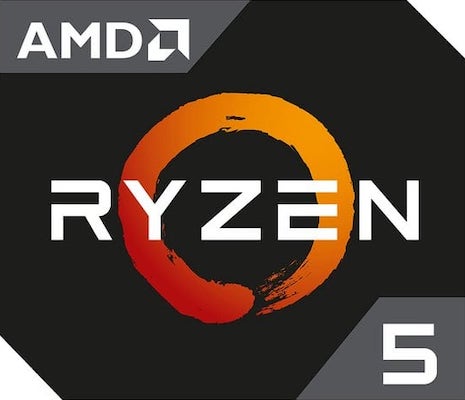
Popular Products
Laptops with AMD Ryzen 5 4600H chipset
AMD AMD Ryzen 5 4600H Expert Verdict
AMD Ryzen 5 4600H, is geared for productivity improvement and gameplay laptops.
Pros
- For high-demand jobs, this low-cost CPU is ideal.
- It is suitable for gaming.
- Certainly manage the most recent games
- 7 nanometers against a 14-nanometer range is a much more sophisticated manufacturing method.
- Has two more hardware cores.
- The estimated network bandwidth is counted to be approximately 22.47 GB/s faster.
Cons
- In single-threaded programs, the scenario is much worse.
- Incongruence with RAM.
- There is less streamlining.
- In Ryzen, there are a few issues that need to be addressed.
- Doesn't work well with slowdown ram.
Passmark score
Passmark Score consists of 4 parameters: CPU, GPU, MEM and UX. The Passmark score of AMD Ryzen 5 4600H is 14758 points.
Compare Chipsets
You can compare its performance with other alternatives of AMD Ryzen 5 4600H and see which chipset would be best for you.
Other Features
Check out the table below for more detailed reviews, specifications, user reviews FAQs and user ratings.
+ Read More - Read LessAMD chipset
- Popular laptops chipset
- Latest laptops chipset
AMD Ryzen 5 4600H Detailed Review
Performance
This AMD Ryzen 5 4600H shows a nearly consistent results gain in productivity per watt when contrasted to its predecessor. It can effortlessly perform common tasks like surfing, downloading, as well as using office authoring tools. If you use video production, image manipulation, or Autocad apps regularly, the 4600H is a true workhorse that combines with both the i7 10750H and 10875H.
Summary
As previously indicated, there is near twice the increase in efficiency per watt.
Structure
AMD's 7 nanometers Ryzen structure offers considerable improvements over previous-generation parts and increased IPC, and just a revised GPU layout. Although the Ryzen 5 4600H has an embedded Vega Graphics with six processor cores running at 1,500 MHz, most workstations that use this Chipset will also include separate Graphics. The chip is made using TSMC's current 7 nm technology.
Summary
AMD claims that the Renoir processors have a 2x performance improvement per watt due to the architecture.
Pace
The Ryzen 5 4600H is much slower than the Ryzen 7 4800H mainly due to two inactive units and the lesser Boost processor speed. Based on four main Zen+ units, the old supermodel Ryzen 7 3750H still seems to be noticeably slower. The Core I7 (6-core Espresso Lake 2.6 - 4.3 Gigahertz) is designed to work similarly to its rivals. The APU additionally includes a Radeon RX Vega Six inbuilt GPU with Six CUs and just a clock speed of up to 1500 MHz, in terms of six Processor cores.
Summary
At this value, the speed is in the moderate bracket.
Thermal Design Strength
The APU's TDP is set to 45 watts by standard, although the machine manufacturer can change it to 35 - 54 watts. This indicates that the chipset is designed for large and hefty computers. The Ryzen 5 4600HS, which has the same characteristics as the Ryzen 5 4600, is a 35 Watts processor variant.
Summary
The processor is designed for laptops that are large and bulky.
AMD Ryzen 5 4600H, is geared for productivity improvement and gameplay laptops.
Accelerated Processing Unit
This Amd ryzen 4600H is at the number one spot, rather than near the bottom, as one might anticipate from such an entry-level processor. AMD's entry-level APU outperforms far more expensive chips.
Efficiency
AMD's component only has 6 cores, which is quite remarkable. AMD can win by a double-digit percentage thanks to Zen 2's increased performance.
AMD Ryzen 5 4600H Specifications
Power
| Fabrication process | 7 nm |
|---|---|
| TDP | 35-54 W |
| Max. temperature | 105°C |
General
| Vendor | AMD |
|---|---|
| Released | January 6, 2020 |
| Type | Laptop |
| instruction set | x86-64 |
| Codename | Zen 2 |
| Socket | FP6 |
| Integrated GPU | Radeon Vega 6 |
Performance
| Cores | 6 |
|---|---|
| Threads | 12 |
| Base Frequency | 3.0 GHz |
| Turbo Boost Frequency | 4 GHz |
| Bus frequency | 100 MHz |
| Multiplier | 30x |
| L1 Cache | 32K (per core) |
| L2 Cache | 512K (per core) |
| L3 Cache | 8MB (shared) |
| Unlocked Multiplier | No |
IGPU
| Integrated Graphics | Radeon Vega 6 |
|---|---|
| GPU Boost Clock | 1500 MHz |
| Shading Units | 384 |
| TMUs | 24 |
| ROPs | 8 |
| TGP | 15 W |
Memory
| Memory types | DDR4-3200, LPDDR4-4266 |
|---|---|
| Memory Size | 32 GB |
| Max. Memory Channels | 2 |
| Max. Memory Bandwidth | 68.27 GB/s |
| ECC Support | Yes |
Misc
| PCI Express Version | 3.0 |
|---|---|
| PCI Express Lanes | 16 |
| Official page | Site URL |
Benchmarks
| Cinebench R23 (Single-Core) | 1138 |
|---|---|
| Cinebench R23 (Multi-Core) | 7858 |
| Passmark CPU (Single-Core) | 2467 |
| Passmark CPU (Multi-Core) | 14758 |
| Geekbench 5 (Single-Core) | 1102 |
| Geekbench 5 (Multi-Core) | 5560 |
Popular AMD Ryzen 5 4600H Comparison
AMD Ryzen 5 4600H FAQs in Pakistan
Q. What is the total passmark score of AMD Ryzen 5 4600H ?
Total passmark score of AMD Ryzen 5 4600H is 14758.
Q. What is the base frequency of AMD Ryzen 5 4600H ?
AMD Ryzen 5 4600H has a base frequency of 3.0 GHz.
Q. What is the max memory size of AMD Ryzen 5 4600H ?
AMD Ryzen 5 4600H has a maximum memory size of 32 GB.